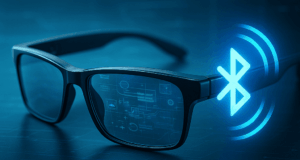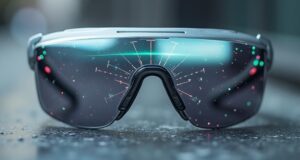In today’s hyper-connected world, language barriers still stand as one of the most persistent obstacles to seamless communication. From bustling marketplaces in Tokyo to international business meetings in London, misunderstandings can arise the moment conversations begin. Enter smart glasses that translate languages, a pioneering wearable technology designed to dissolve these divides by delivering real‑time translations directly into your line of sight. By combining advanced optics, miniature cameras, and AI‑powered translation engines, these devices allow users to converse naturally—without ever glancing down at a phone or handheld translator.
Beyond simply converting words from one tongue to another, these smart glasses adapt to context, dialect, and even technical jargon, ensuring that translations remain accurate and relevant. Whether you’re a globetrotting tourist, a healthcare professional consulting with foreign‐language patients, or a student attending an international conference, the ability to understand and be understood on the fly is invaluable. In the following sections, we’ll explore the core technologies that make this possible and highlight the most compelling use cases for overcoming language barriers once and for all.
Smart glasses that translate languages: The Fundamentals of Technology

Smart glasses that translate languages represent a breakthrough wearable solution, delivering real‑time translations directly into your field of view. These devices enable seamless communication in multilingual environments without the need to glance down at a phone or handheld translator. Smart glasses that translate languages combine integrated optical systems with powerful software to instantly capture both spoken words and written text, then project the translated content onto a transparent display. By minimizing latency and streamlining the translation workflow, smart glasses that translate languages ensure a natural, uninterrupted dialogue wherever you go.
Camera and Audio Sensing Systems
The hardware backbone of smart glasses that translate languages consists of high‑resolution, wide‑angle cameras and multi‑channel microphone arrays. Cameras operating at up to 60 frames per second detect printed text and the lip movements of speakers, merging optical character recognition (OCR) with visual speech cues to boost translation accuracy. At the same time, directional microphones employ beam‑forming and noise‑cancellation technologies to isolate speech even in noisy settings. Smart glasses that translate languages process these synchronized audio‑visual inputs in real time, feeding clean, context‑rich data to the translation engine and drastically reducing errors caused by ambient noise. Whether streaming to the cloud via low‑latency wireless links or leveraging on‑device processing for offline use, these sensing systems underpin a smooth, instantaneous translation experience.
Artificial Intelligence and Translation Algorithms
At the core of smart glasses that translate languages lies an advanced AI‑driven translation engine. First, automatic speech recognition (ASR) converts incoming audio into text. Next, neural machine translation (NMT) models powered by deep learning analyze sentence structure, idiomatic expressions, and contextual nuances to generate fluent, natural translations. Smart glasses that translate languages further leverage AI‑based language detection layers to distinguish accents, dialects, and specialized jargon, ensuring high accuracy across diverse speakers. Over time, these devices build personalized translation memories—adapting to user preferences and frequently used terms for even faster, more precise results. The modular AI architecture also allows rapid integration of new language packs and domain‑specific glossaries, making smart glasses that translate languages a versatile, continuously evolving assistant for overcoming language barriers in any scenario.
Smart glasses that translate languages: Applications

Smart glasses that translate languages serve as powerful tools across multiple domains, breaking down communication barriers and enhancing real‑time interactions in both personal and professional settings. By integrating translation capabilities directly into wearable eyewear, Smart glasses that translate languages enable seamless understanding without disrupting natural eye contact or workflow.
Travel and Tourism
In the travel and tourism industry, Smart glasses that translate languages empower visitors to navigate foreign environments with confidence. Whether reading restaurant menus, deciphering street signs, or conversing with locals, Smart glasses that translate languages deliver instant visual and auditory translations that remove the need for guidebooks or smartphone apps. This convenience enhances cultural immersion and reduces stress during international journeys.
Education and Business
Within educational and corporate environments, Smart glasses that translate languages foster inclusive learning and efficient global collaboration. In classrooms, Smart glasses that translate languages provide real‑time subtitles for lectures in foreign languages, ensuring that all students can follow along. Similarly, in multinational meetings, Smart glasses that translate languages facilitate smooth communication among participants, reducing reliance on human interpreters and accelerating decision‑making processes.
Best AI Translation Smart Glasses
The following product recommendations are provided for informational purposes only. We assume no responsibility for product performance, warranty coverage, or shipping. Purchase and use decisions are entirely at your own risk.
1. Lenskey AI Translation Glasses
Lenskey AI Translation Glasses feature discreet, temple‑embedded microphones and speakers that support real‑time two‑way translation in over 144 languages and dialects. Their high‑precision beam‑forming microphone array isolates the speaker’s voice even in noisy environments, while the custom noise‑cancellation algorithm ensures clear audio capture. Integrated optical sensors perform instantaneous optical character recognition (OCR) on printed text—menus, signs, and documents—and display the translated text on an ultra‑thin, heads‑up micro‑display. A single full charge delivers up to 8 hours of continuous translation, and both Bluetooth and Wi‑Fi connectivity options let you choose between online cloud‑based translation for maximum accuracy or offline on‑device processing for privacy and speed.
2. Giinova AI Translation Smart Glasses
Giinova AI Translation Smart Glasses leverage an onboard AI engine based on OpenAI’s GPT architecture to deliver two‑way translation in 138 languages. Their lightweight frame houses dual MEMS microphones for 360° voice pickup and a bone‑conduction speaker that provides private audio without blocking ambient sounds. The glasses connect via Bluetooth Low Energy (BLE) to a companion smartphone app, which handles heavy‑duty translation tasks and syncs vocabulary preferences. Real‑time subtitles appear on the right lens through a transparent waveguide display, while the left lens remains clear for natural vision. These glasses also support image‑based translation: snap a photo of printed text and receive instant translation overlays on your smartphone.
3. iTour GO2 Smart AI Translation Glasses
The iTour GO2 Smart AI Translation Glasses combine an array of four directional microphones with advanced noise reduction DSP to capture speech up to 3 meters away, making them ideal for meetings and guided tours. They provide simultaneous two‑way translation in 127 languages and automatically detect the source language without manual selection. Translations appear as text overlays directly on the lens, and spoken translations are delivered through discreet on‑frame speakers. A dedicated “Teleprompter Mode” allows users to read lengthy passages—such as speeches or presentations—with synchronized translation captions. The glasses feature a swappable battery pack system, offering up to 10 hours of operation per pack, and support both USB‑C fast charging and Qi wireless charging for maximum convenience.




